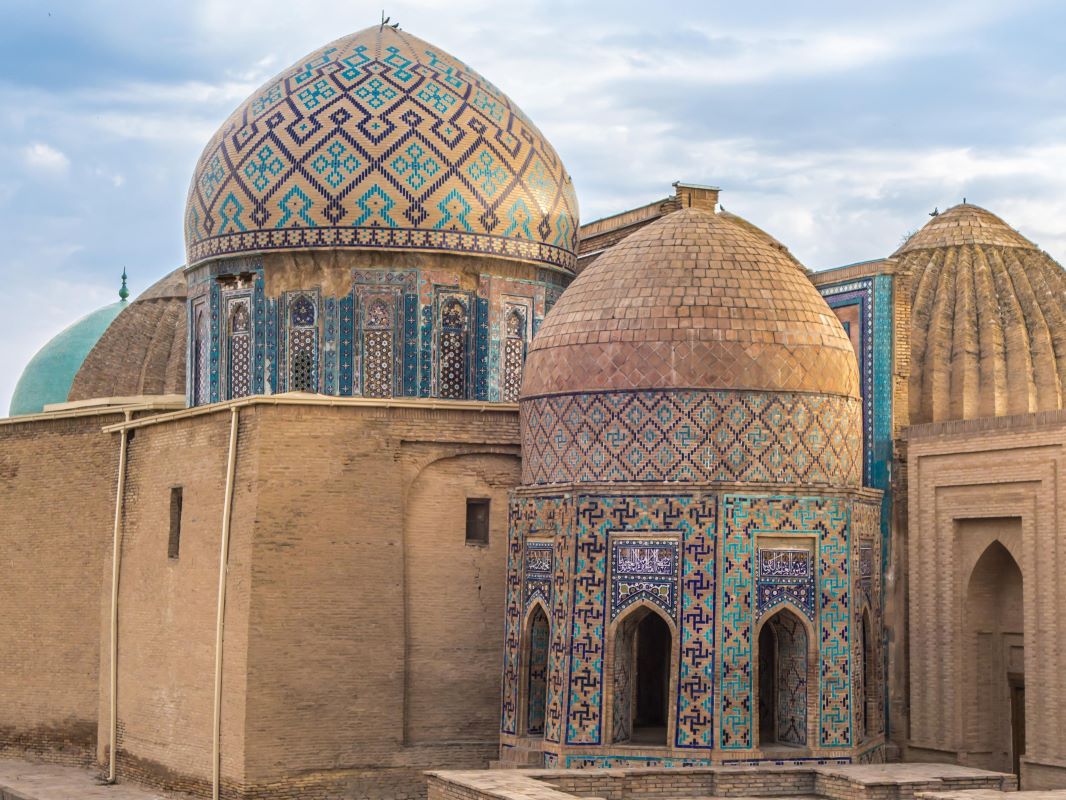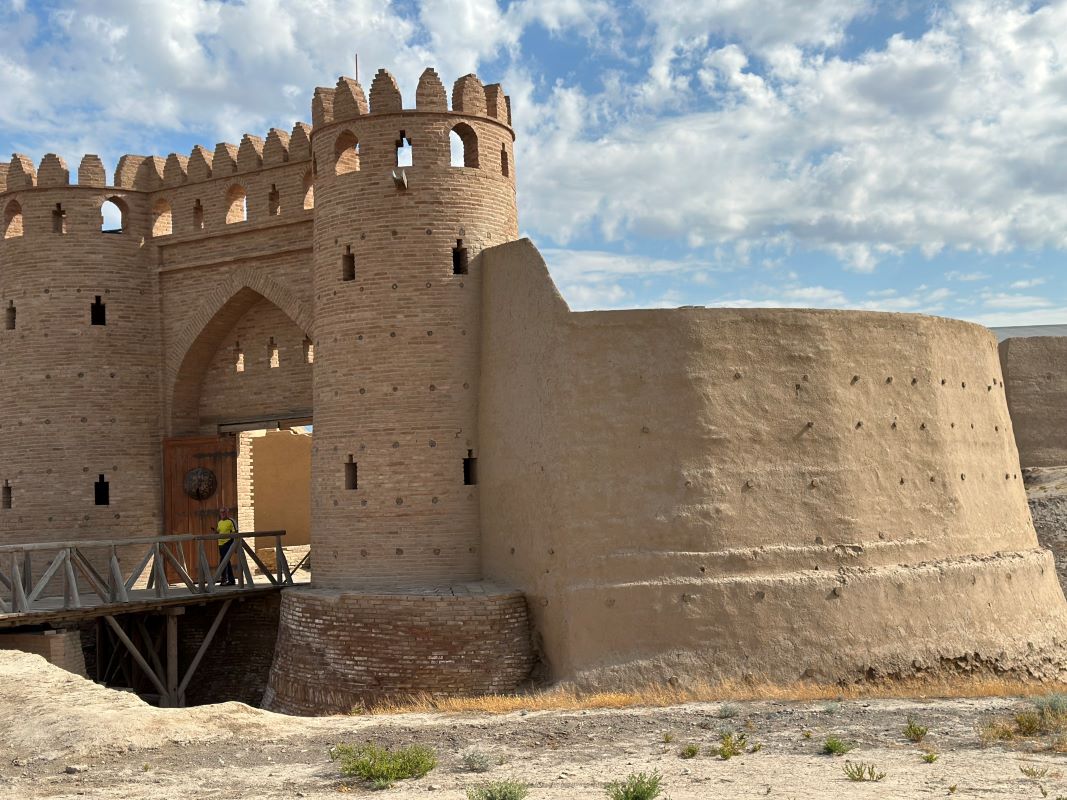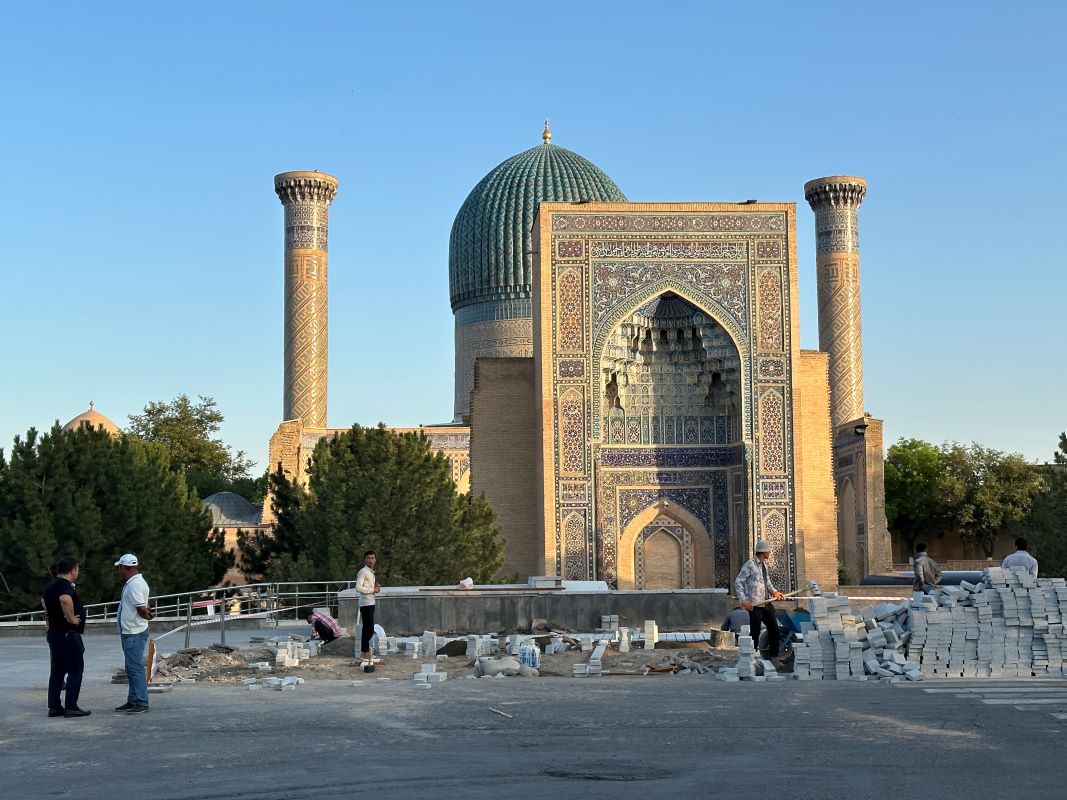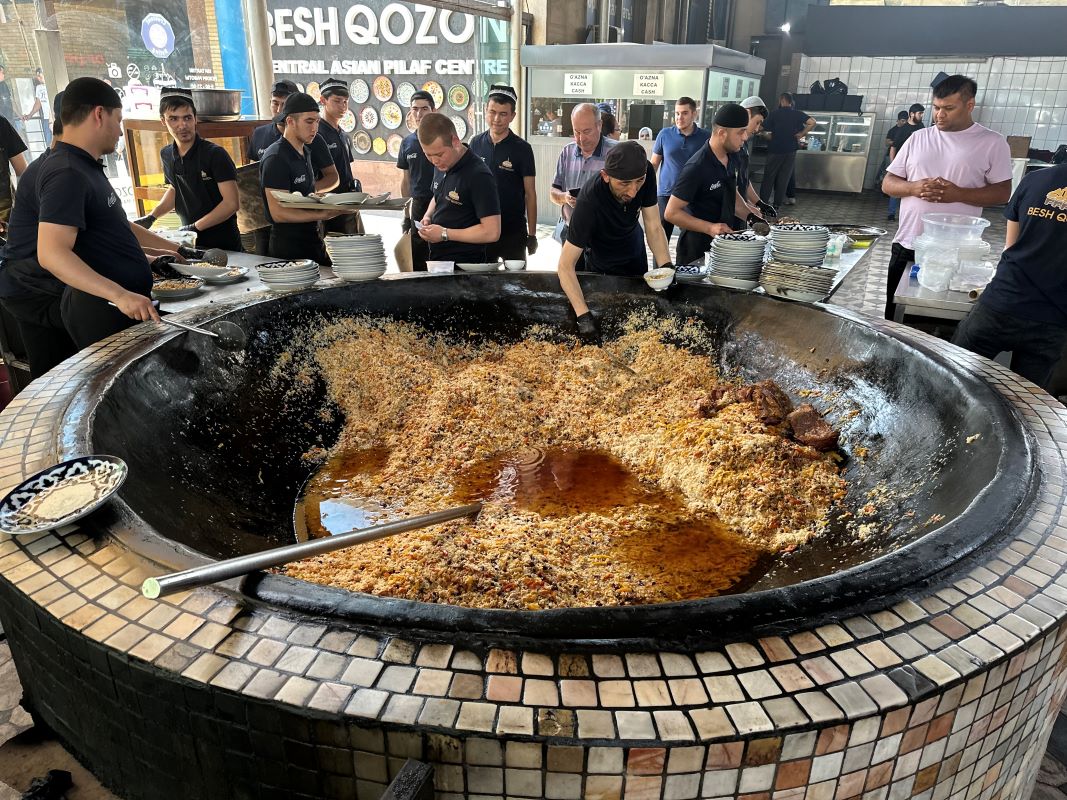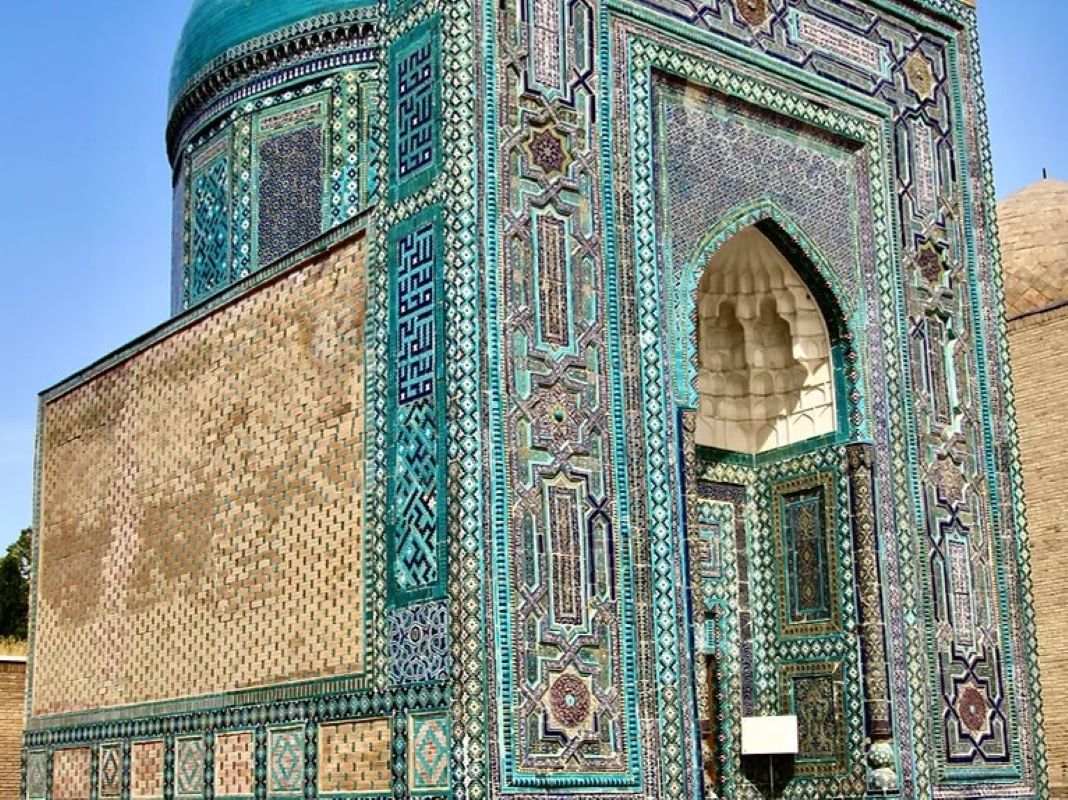This stunning necropolis, one of the most renowned sites in Samarkand, showcases rich tile work and history back to the 14th century.This avenue of mausoleums is one of Samarkand’s most beloved sites, and consists of grand tombs resembling palaces decorated with brilliant bursts of colour and geometric patterns exuding the essence of Central Asian artwork and design. The name means ‘Tomb of the Living King’ and holds the grave of 7th century Qusam, the cousin of the prophet Mohammed. Many of these tombs were controversially restored in 2005, leaving much of the mosaics, majolica and terracotta to be restorations and not in their original state.
Shah-i-Zinda is a world-famous example of a continuously constructed historical site. Over 1,000 years ago, it was founded with a single religious monument. Between the 11th & 19th centuries, mosques & mausoleums were continuously added. The result is a fascinating cross-reference of diverse architectural styles, methods & decorative craftsmanship.
The surreal landscape makes unique use of geometric lines combined with multi patterned tiles around doorways or on towers dating back more than eight centuries – all converging into an exquisite visual impact.
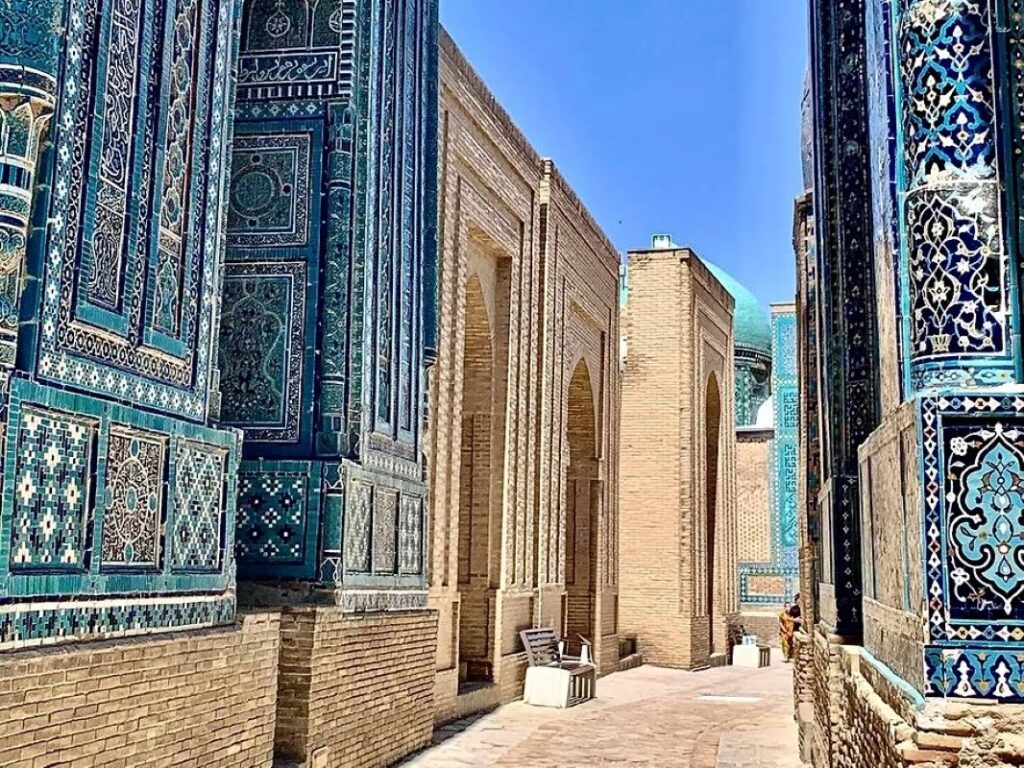
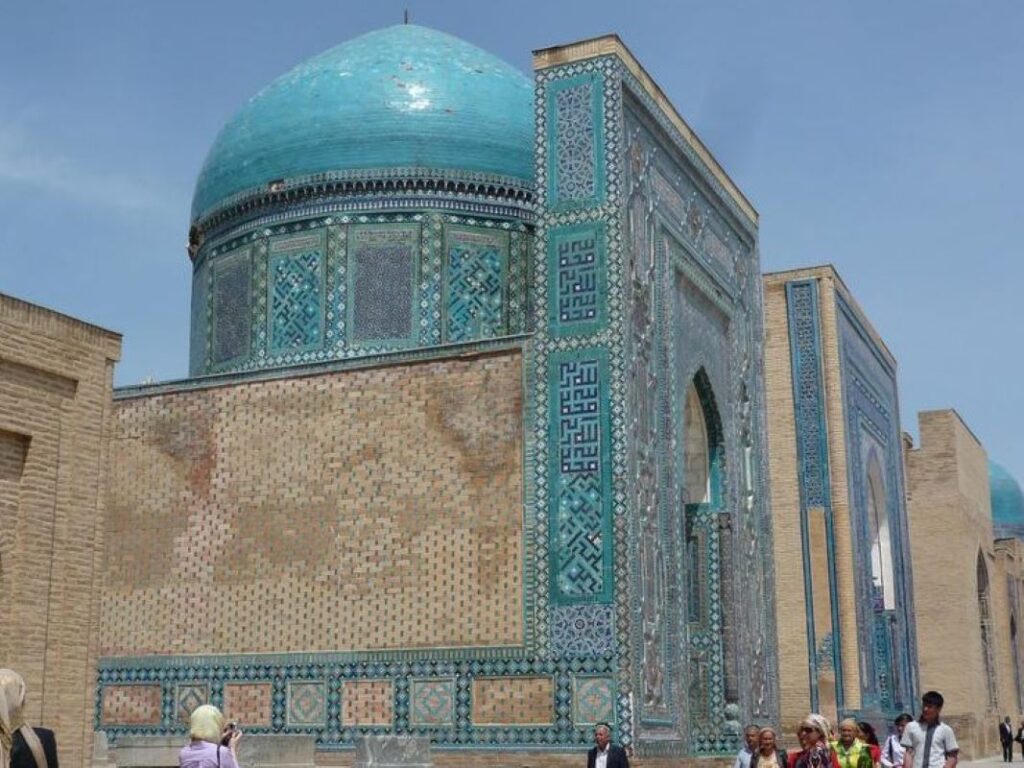
Expansion of the Shah-i Zinde in the XIV Century
By the fourteenth century, it seems that a road from the west intersected the Shah-i Zinda at its north end and provided the main entrance to the site just in front of one of the new mausolea, that of Khwaja Ahmad (a Sufi?), which dates to the 1340s. While by the sixteenth century its dome and walls apparently had collapsed, apparently the tile work around the entrance is original and is certainly some of the most striking of the whole complex. Here we see examples of the deeply incised glazed terracotta that continued to be popular into the Timurid period (see below concerning possible artistic influences). Adjoining the mausoleum of Khwaja Ahmad on the east is the tomb of an unidentified woman, dating to 1361. At least one source indicates that one of Timur’s first wives, Qutlugh Ata, was buried here. Whether or not that is true, one would assume someone really important is buried here, given the location between two of the most important shrines of local religious figures and positioned so that the road from the west would lead a person directly to its entrance. The entrance preserves striking terracotta-decorated muqarnas and a variety of calligraphic styles.

